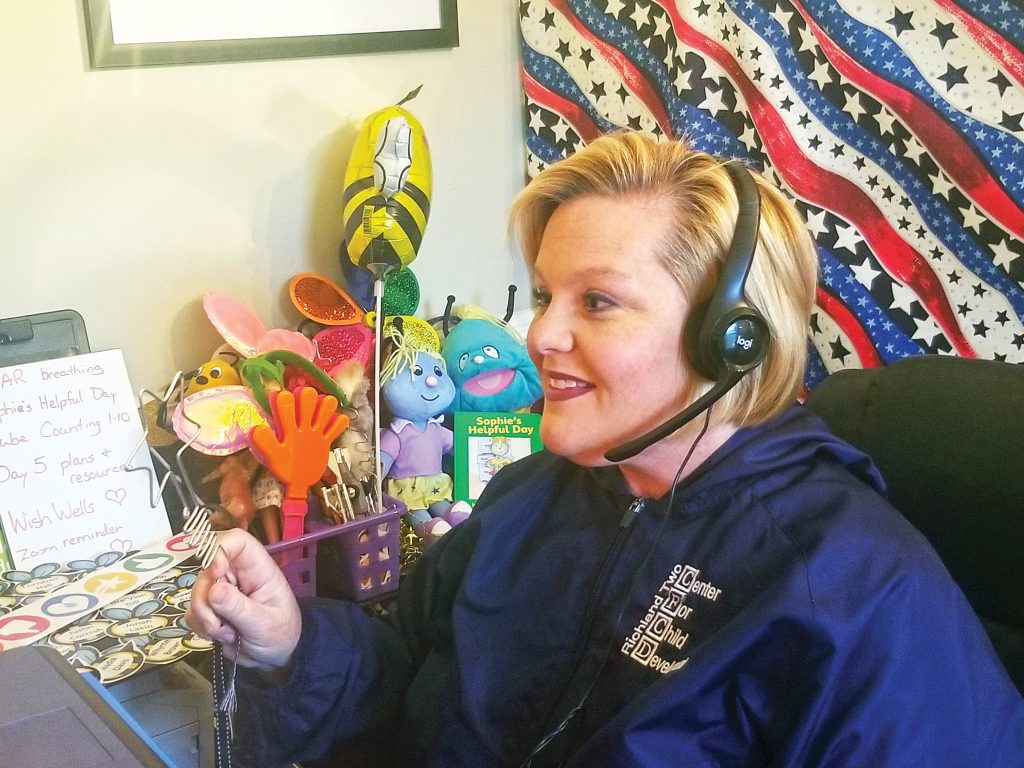BLYTHEWOOD – When Governor McMaster mandated on March 13 that schools, colleges and universities across the state had to shut their doors until at least March 31, teachers and administrators had to prepare and execute, in a very short period of time, a plan to continue educating their students remotely.
Richland Two School District administrators wasted little time in formulating a plan and prompted their teachers, several days ahead of the shutdown, to be proactive in planning for the Covid-19 closing of schools.
The plan began to unfold as the district packaged 10 days of learning activities in remote e-learning packets for grades Pre K- 5 district-wide.

“Teachers at my school were given all day on Tuesday to prepare to teach our students remotely,” Dr. MaryPaul Hoile said. Hoile, a 25-year veteran teacher, is in her first year of teaching at Bridge Creek Elementary, a STEAM-M school. She teaches child development for children age four (CD-4).
“We immediately focused on getting our rooms prepared for the long absence. We gathered up materials and contacted our students/families,” She said the teachers at her school were given specific schedules and directions for the first few days of the shutdown.
According to Hoile’s review of week one, all is going as smoothly as possible, and students and teachers are now in their second week of e-learning. She said her students receive their learning packets every Monday morning either by email, in person by way of car rider line pick up or online via her class’s private Facebook group.
Hoile depends heavily on Facebook and other social media to connect with her students during the pandemic. She begins class each weekday morning by going ‘live’ at 9 a.m. and greeting her students and their families.
“I had previously set up an online Facebook group connection to share a virtual newsletter with all my 20 students and their parents. They (her students) need connection in order to allow for optimal learning,” Hoile said. “We didn’t have an opportunity to say our goodbyes for such an extended period of time, so Facebook provides that connection,” Hoile said. “All of my students’ parents and guardians actively participate with their children by logging in each morning and responding to questions or by greeting each other using the CHAT feature. It’s been a wonderful experience as I read books and sing songs with them. I have also had guest readers/speakers share videos in our group,” Hoile said.
In addition to following her typical morning meeting time as much as possible, she allows time for her students to work on their remote learning packets. Throughout the day she will go “live” again to add a video of herself or another guest reader and to add resources for the parents to use.
“I realize that this is a very stressful time for families as they work hard to teach their children at home, so I don’t want to overwhelm them with too much work. Resources are a great way to allow parents the opportunity to extend learning.”
Hoile credits her previous online teaching experiences in helping her to be prepared for this unique situation. She is also in contact with her co-teachers in the child development program by way of virtual meetings where they can plan and share ideas with one another.
“I feel that we have taken this negative situation and made it the best possible experience for all of our students,” Hoile said. “By joining each other’s Facebook pages, we (CD teachers) have been able to observe and learn from each other to better teach our students,” she said.
As teachers, students and parents learn the ropes of remote teaching and learning, posts are popping up on social media comically depicting frustrated parents, and students eager to get back into the school setting with real teachers and teachers, like Hoile, proving their metal under difficult circumstances.











